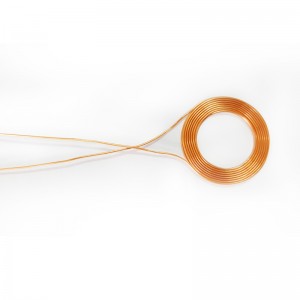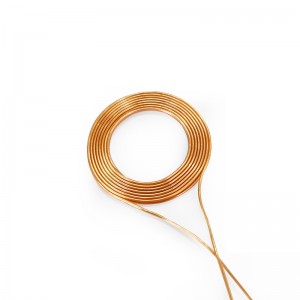High mechanical performance, heat resistance, and compression resistance, customizable F-grade gold Teflon self-adhesive coil, new energy for photovoltaic equipment
F-grade golden Teflon self-adhesive coil
Product name: F-grade golden Teflon self-adhesive coil
Teflon insulated wire refers to an insulated wire made of fluoroplastic (ETFE) as the insulating material. Due to its non adhesion, heat resistance, sliding resistance, moisture resistance, wear resistance, corrosion resistance, and other characteristics. So compared to other high-temperature wires, Teflon wire has excellent thermal stability and mechanical wear resistance, electrical insulation performance, resistance to strong acids and alkalis, corrosion, fire resistance and non combustion, high oxygen index, low smoke and halogen-free, non aging, easy to peel wire, high strength and friction resistance. There is a certain difference between the temperature resistance of Teflon wire and the material of the outer packaging material. Among them, the characteristics of ETFE are good processing formability, balanced physical properties, good mechanical toughness, and excellent radiation resistance. This material has the corrosion resistance characteristics of polytetrafluoroethylene, overcoming the non adhesion and sexual defects of polytetrafluoroethylene to metals. In addition, its average linear expansion coefficient is close to that of carbon steel, making ETFE (F-40) an ideal composite material with metals
Its performance has excellent corrosion resistance, almost insoluble in any organic solvent, and can resist oil, strong acids, strong alkalis, strong oxidants, etc; Has excellent electrical insulation performance, high voltage, low high-frequency loss, no moisture absorption, and high insulation resistance; It has excellent flame resistance, aging resistance, and long service life.
Coil shape control:
Firstly, use an inward extrusion method to squeeze the edges of the square coil inward, ensuring that the thickness of the coil is consistent. But the problem with this is that if the wire is extruded after being wound, if the arrangement is not neat, it will cause damage to the wire and lead to the production of defective products. If the method of squeezing once after winding one layer is used, the structure of the machine will be more complex and the cost will be higher. Less compatibility.
Secondly, by using an outward extrusion method, the wound circular or elliptical coil has high precision in wire arrangement and consistent thickness at all positions. By squeezing the circular or elliptical coil from the inner circle to the outside through a mold, the produced square coil has consistent thickness and conductivity at all positions. The disadvantage of this method is that it cannot squeeze coils with too many layers or too large thickness.
Therefore, when winding the coil, the control of the shape must be accurate, whether it is angle or shape, or the performance of the wire will be affected. Moreover, in the actual production and processing process, improper operation in later production and processing may cause damage to the insulation layer, posing a significant quality hazard to the coil performance. So during the production process, operations should be strictly carried out in accordance with production requirements. The setting of temperature and tension should be centered on product quality and cannot be blindly fast.











1-300x300.jpg)
1-300x300.jpg)